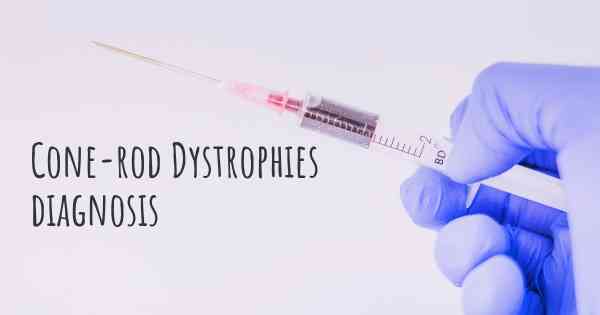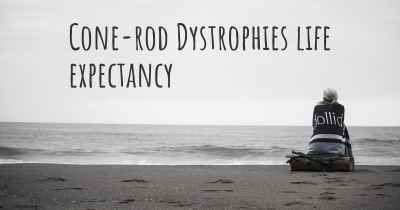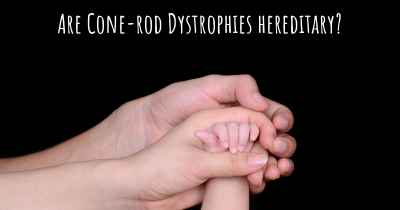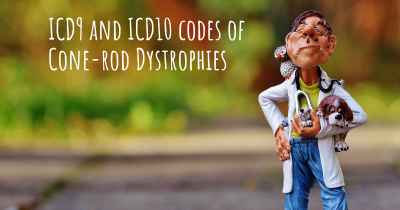How are Cone-rod Dystrophies diagnosed?
See how Cone-rod Dystrophies are diagnosed. Which specialists are essential to meet, what tests are needed and other useful information for the diagnosis of Cone-rod Dystrophies

Cone-rod dystrophies (CRDs) are a group of inherited eye disorders that primarily affect the cone and rod cells in the retina, leading to progressive vision loss. Diagnosing CRDs involves a comprehensive evaluation of the patient's medical history, a thorough eye examination, and various diagnostic tests.
Medical History
During the diagnostic process, the ophthalmologist will first gather the patient's medical history. This includes information about any symptoms experienced, the age of onset, family history of eye diseases, and any other relevant medical conditions. Understanding the patient's medical background helps in identifying potential risk factors and narrowing down the diagnostic possibilities.
Eye Examination
The next step in diagnosing CRDs involves a detailed eye examination. The ophthalmologist will perform various tests to assess visual acuity, color vision, visual field, and the overall health of the eye. Some of the key components of the eye examination include:
Visual Acuity Test
This test measures the clarity of vision using an eye chart. The patient is asked to read letters or symbols from a distance, and the results are recorded as a fraction (e.g., 20/20). Reduced visual acuity is a common symptom of CRDs.
Color Vision Test
CRDs often affect color vision, so specialized tests like the Ishihara color plates or Farnsworth-Munsell 100 hue test may be conducted. These tests help identify any color vision deficiencies or abnormalities.
Visual Field Test
A visual field test assesses the full extent of a patient's peripheral vision. It helps detect any blind spots or areas of reduced vision, which can be indicative of CRDs.
Fundus Examination
The ophthalmologist will examine the back of the eye, specifically the retina and optic nerve, using an ophthalmoscope or a slit-lamp biomicroscope. This allows them to evaluate the health of the retina, identify any abnormalities, and assess the condition of the cone and rod cells.
Diagnostic Tests
In addition to the eye examination, several diagnostic tests may be performed to confirm the diagnosis of CRDs and determine the specific subtype. These tests include:
Electroretinography (ERG)
ERG is a crucial test for diagnosing CRDs. It measures the electrical responses generated by the cone and rod cells in response to light stimulation. By analyzing the ERG waveform, ophthalmologists can assess the function of these cells and detect any abnormalities or dysfunction.
Genetic Testing
Genetic testing plays a vital role in diagnosing CRDs as they are primarily caused by genetic mutations. This involves analyzing a blood or saliva sample to identify specific gene mutations associated with cone-rod dystrophies. Genetic testing can help confirm the diagnosis, determine the inheritance pattern, and provide valuable information for genetic counseling.
Optical Coherence Tomography (OCT)
OCT is a non-invasive imaging technique that provides high-resolution cross-sectional images of the retina. It allows ophthalmologists to assess the thickness and integrity of retinal layers, identify any structural abnormalities, and monitor disease progression over time.
Visual Field Testing
More detailed visual field tests, such as automated perimetry or Goldmann perimetry, may be conducted to precisely map any visual field defects caused by CRDs.
Other Tests
In some cases, additional tests like electrooculography (EOG), dark adaptometry, or genetic counseling may be recommended to further evaluate the patient's condition and provide a comprehensive diagnosis.
Conclusion
Diagnosing cone-rod dystrophies involves a combination of medical history assessment, comprehensive eye examination, and specialized diagnostic tests. The medical history helps identify potential risk factors, while the eye examination assesses visual acuity, color vision, and overall eye health. Diagnostic tests such as electroretinography, genetic testing, optical coherence tomography, and visual field testing play a crucial role in confirming the diagnosis, determining the specific subtype, and monitoring disease progression. Early and accurate diagnosis of CRDs is essential for appropriate management and genetic counseling.








